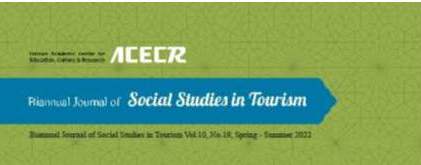-
-
List of Articles
-
Open Access Article
1 - Investigating Stakeholder Perceptions on the Realization of Pro-Poor Tourism in Selected Villages in the Eastern Province of Semnan
Mohammad Reza Rezvani seyed ali badri Zabih-Allah Torabi -
Open Access Article
2 - The Typology of Pilgrimage Styles among Youths in Mashhad
مهدی کرمانی Ahmadreza AsgharpourMasouleh Mohammadmahdi VaezMousavi -
Open Access Article
3 - Determining the Most Suitable Ecosystem for Community-Based Ecotourism Development: case of Siyahoo rural district in Bandar
Ali Shahdadi -
Open Access Article
4 - Identifying Institutional Factors Influencing the Exploitation of Entrepreneurial Opportunities in Health-Tourism in Iran: a qualitative study of Tehran province
Kamal Sakhdari nader seyedamiri Alireza Rajaian Javad Sakhdari -
Open Access Article
5 - A Model for Investigating the Effect of Online Word-of-Mouth Communications on Travel Intention for Tourism Destination
Mohammad ghaffari -
Open Access Article
6 - The Effect of Water Conservation and Waste Reduction Management on Increasing the Customer Loyalty in the Hotel Industry
Maryam Mesbahi Shokrieh Taheri Zahra Akbari -
Open Access Article
7 - Psychological Carrying Capacity and Lake Beach Management in Zayanderud Dam
Kamran Shayesteh Zahra Sheikhi Alireza Ildoromi
-
The rights to this website are owned by the Raimag Press Management System.
Copyright © 2017-2025







